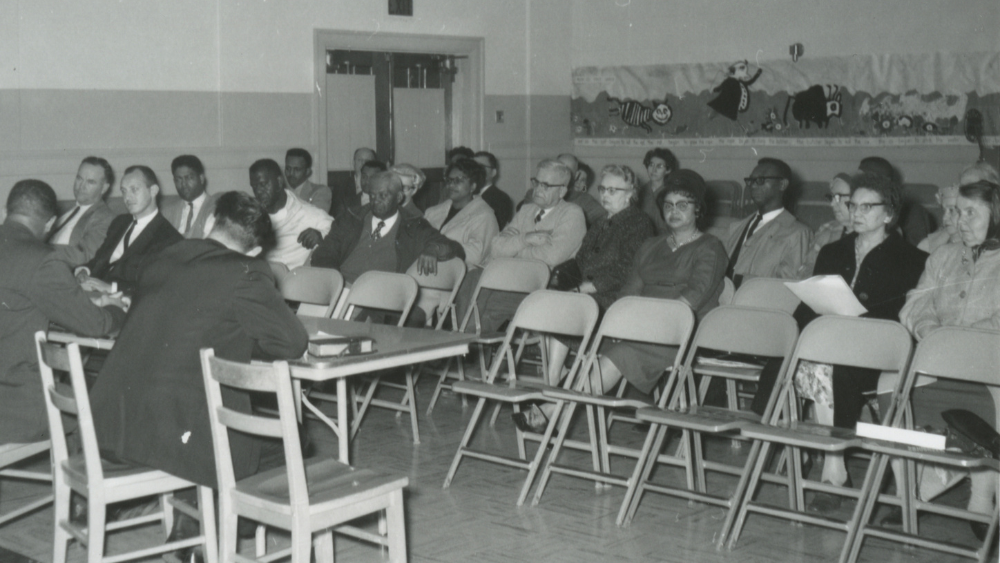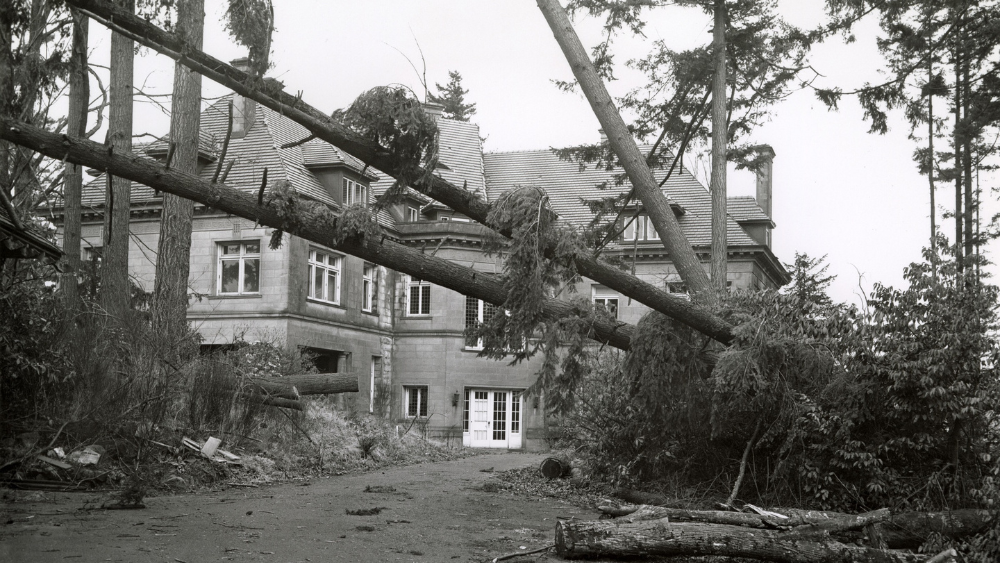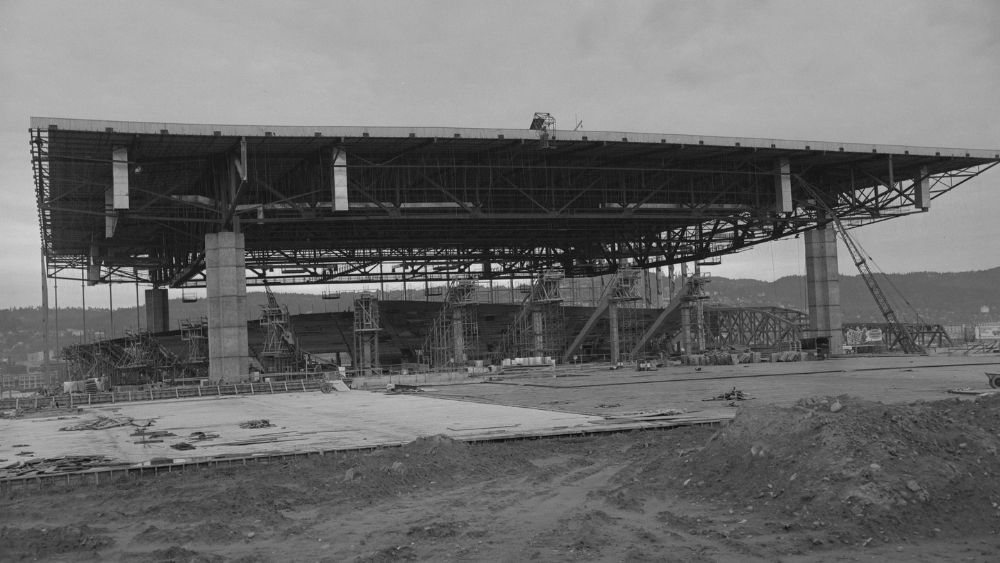Much like elsewhere in the country, social movements gained a foothold in Portland during the 1960s. Activists fought for justice on multiple fronts, taking on racial and gender discrimination, as well as threats to the environment; at the same time, beloved cultural institutions opened their doors.
Population: 372,676
Mayors: Terrence Doyle “Terry” Schrunk (1957-1972)
1960 — More than 5,000 shoppers attend the opening of the Lloyd Center, which developers advertise as the “biggest mall in the world.” Several months later, Memorial Coliseum becomes Portland’s largest indoor arena.

From 1961 to 1972, members of the Albina Neighborhood Improvement Project planted 1,115 trees throughout North Portland.
Photo via Portland City Archives
1961 — Portland Public Schools converts its adult education program into a separate entity, thus establishing Portland Community College.
1962 — Packy, the first elephant born in the Western Hemisphere in 44 years, is born at the Oregon Zoo. Radio station KPOJ holds a baby-naming contest for the young pachyderm. The Columbus Day storm brings Category 3 hurricane-force winds and devastation to the PNW.
1963 — “Golden Gate red” replaces the Broadway Bridge’s black paint, a color it wore for 50 years.
1964 — The NAACP chapter of Portland marks its 50th anniversary by moving into new headquarters on North Williams Avenue.

The record windstorm of 1962 caused severe damage to Pittock Mansion; a max gust of 116 mph was recorded on the Morrison Bridge.
Photo via Portland City Archives
1965 — Following a conservation campaign which saw citizens raise $67,500, the newly restored Pittock Mansion avoids the bulldozer and instead opens to the public as a museum.
1966 — Thirty-one Vietnam War protesters are arrested outside of the Sheraton Motor Inn, where Vice President Hubert Humphrey defends the US’ involvement in the conflict.
1967 — The Portland Japanese Garden formally opens, drawing 28,000 visitors before closing for the winter. A protest against police treatment of Black people boils over at Irving Park, leading to the “Albina riot.”
1968 — Three years after allegedly getting fired from Little Richard’s band in the middle of a show at the Crystal Ballroom, guitarist Jimi Hendrix returns for a packed show in Memorial Coliseum.
1969 — Rose City Transit goes bankrupt and the Tri-County Metropolitan Transportation District of Oregon, or TriMet, takes over with minimal bumps along the way.










